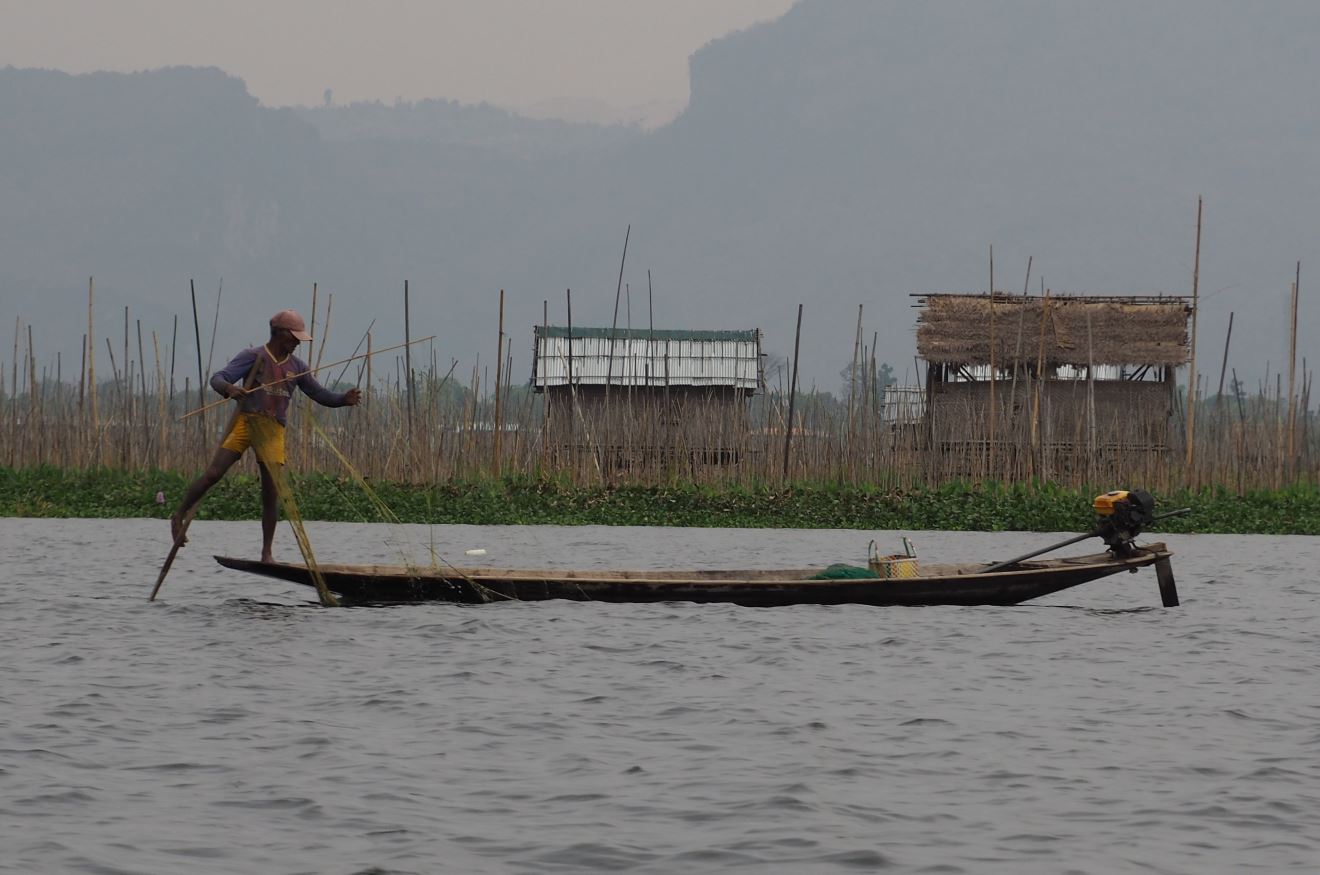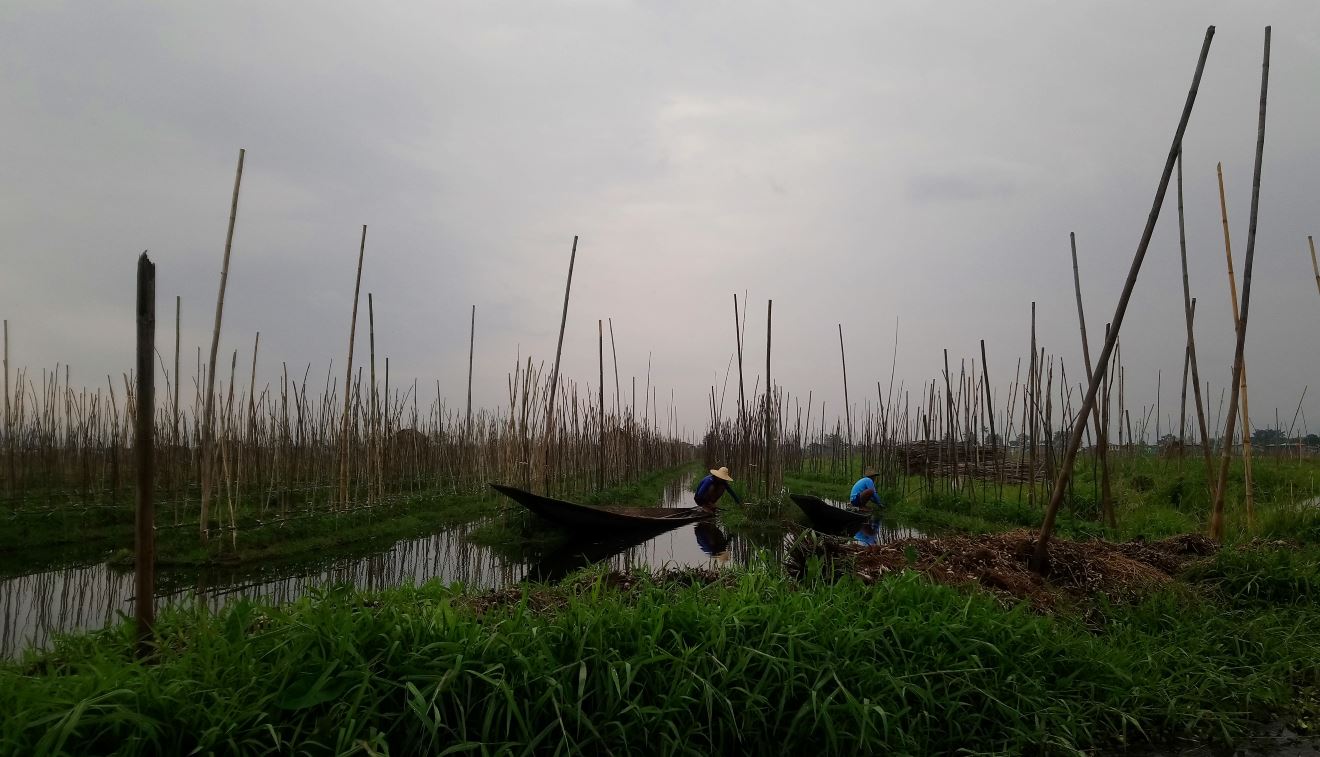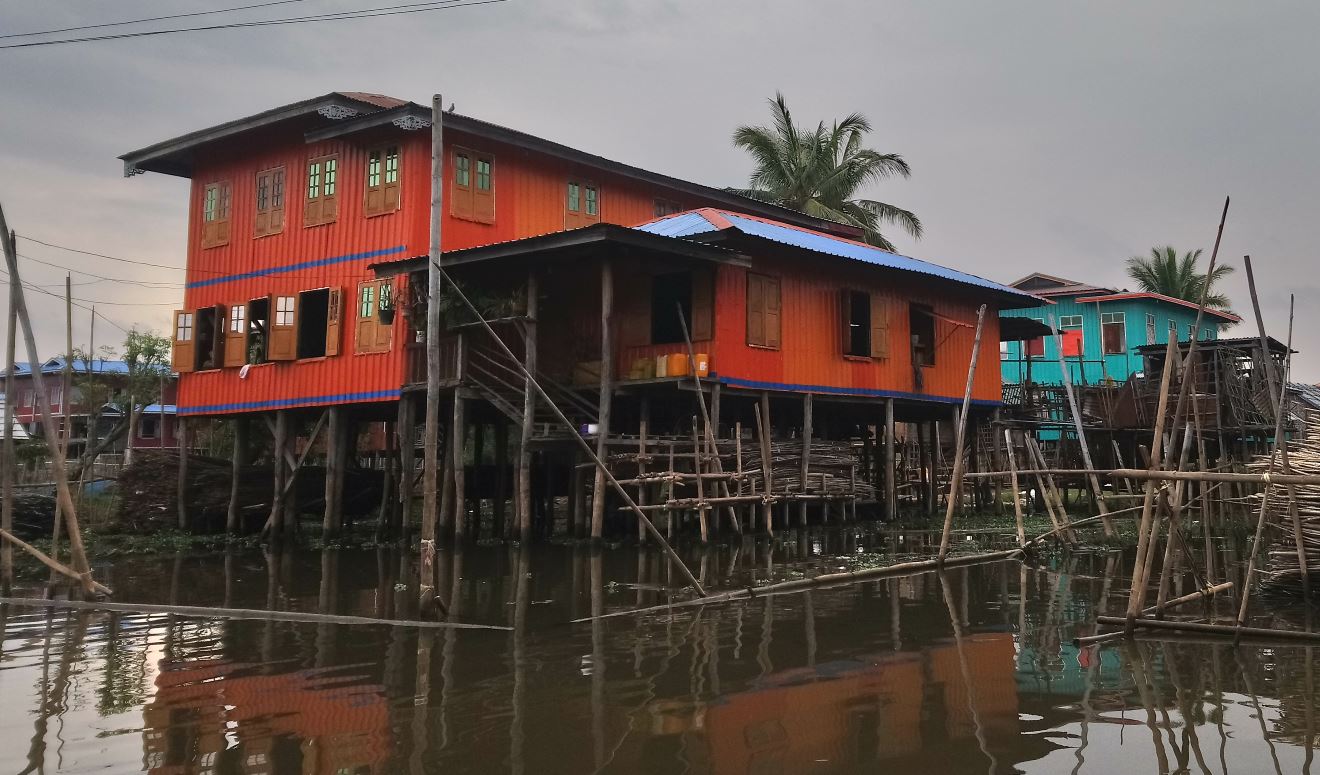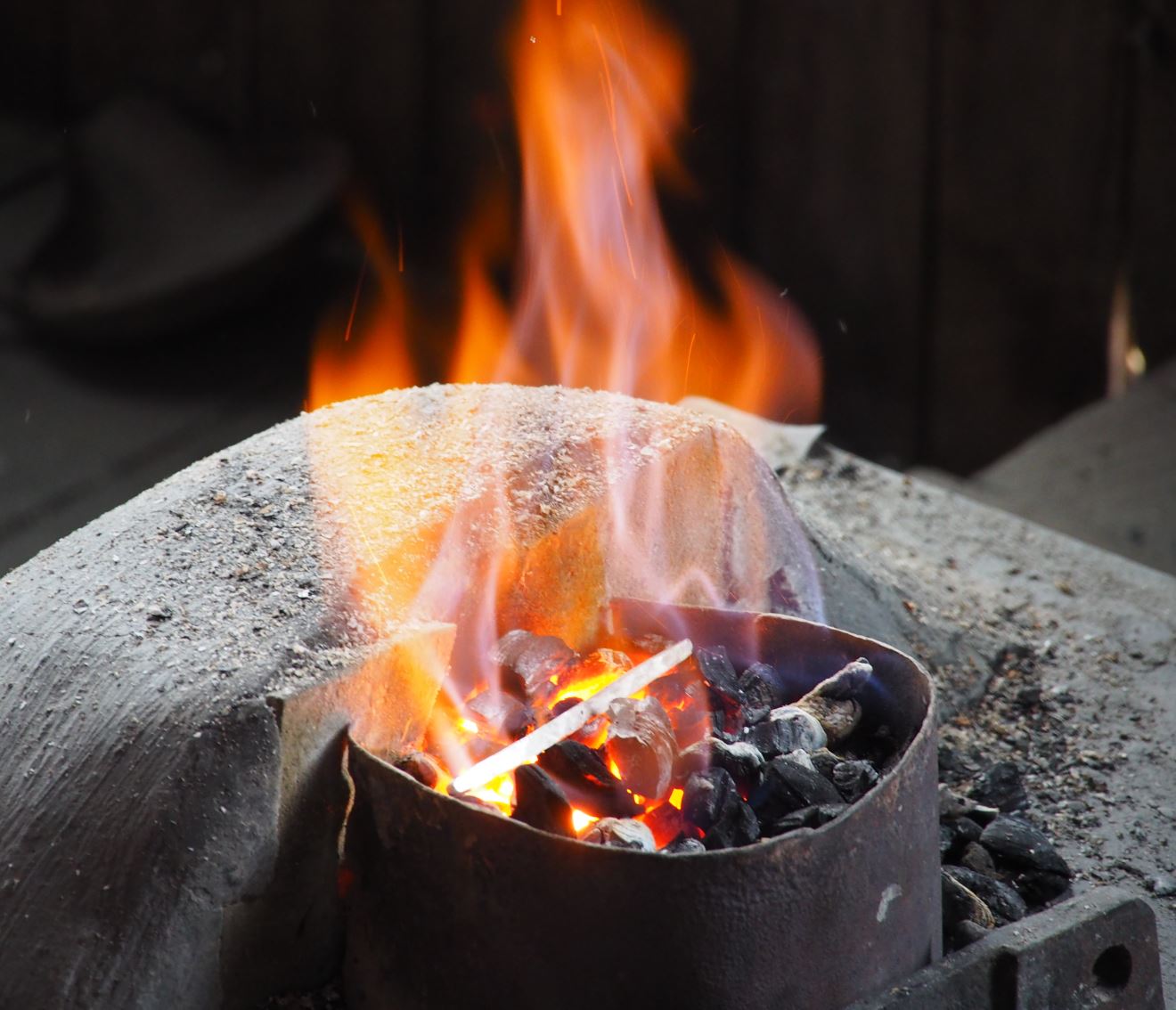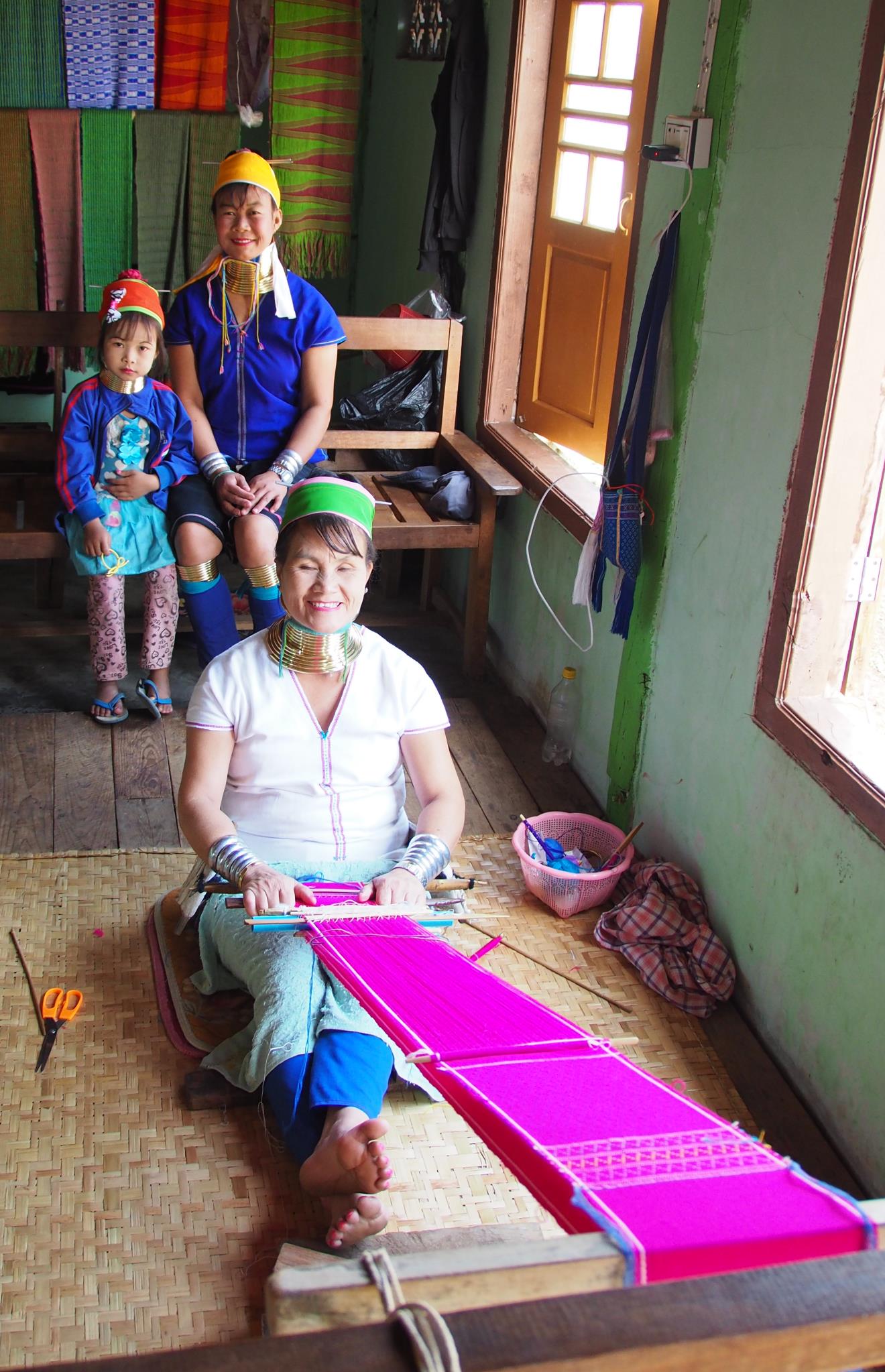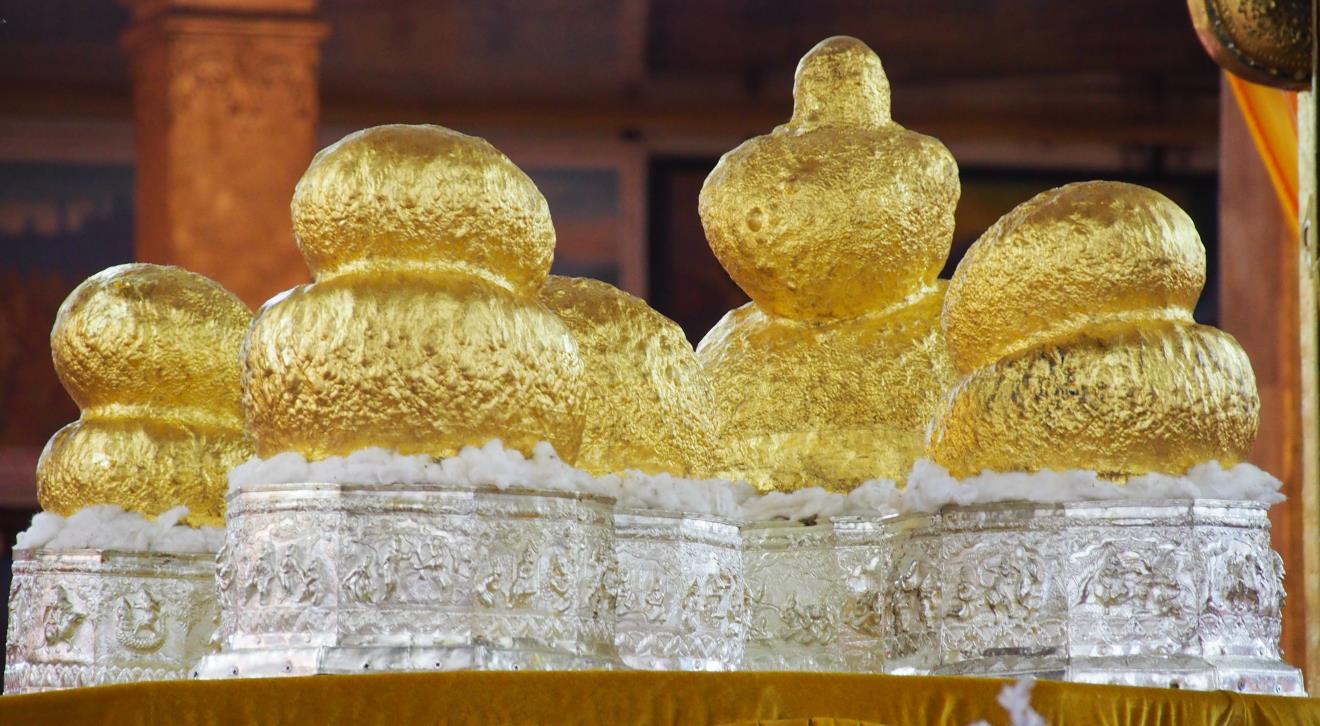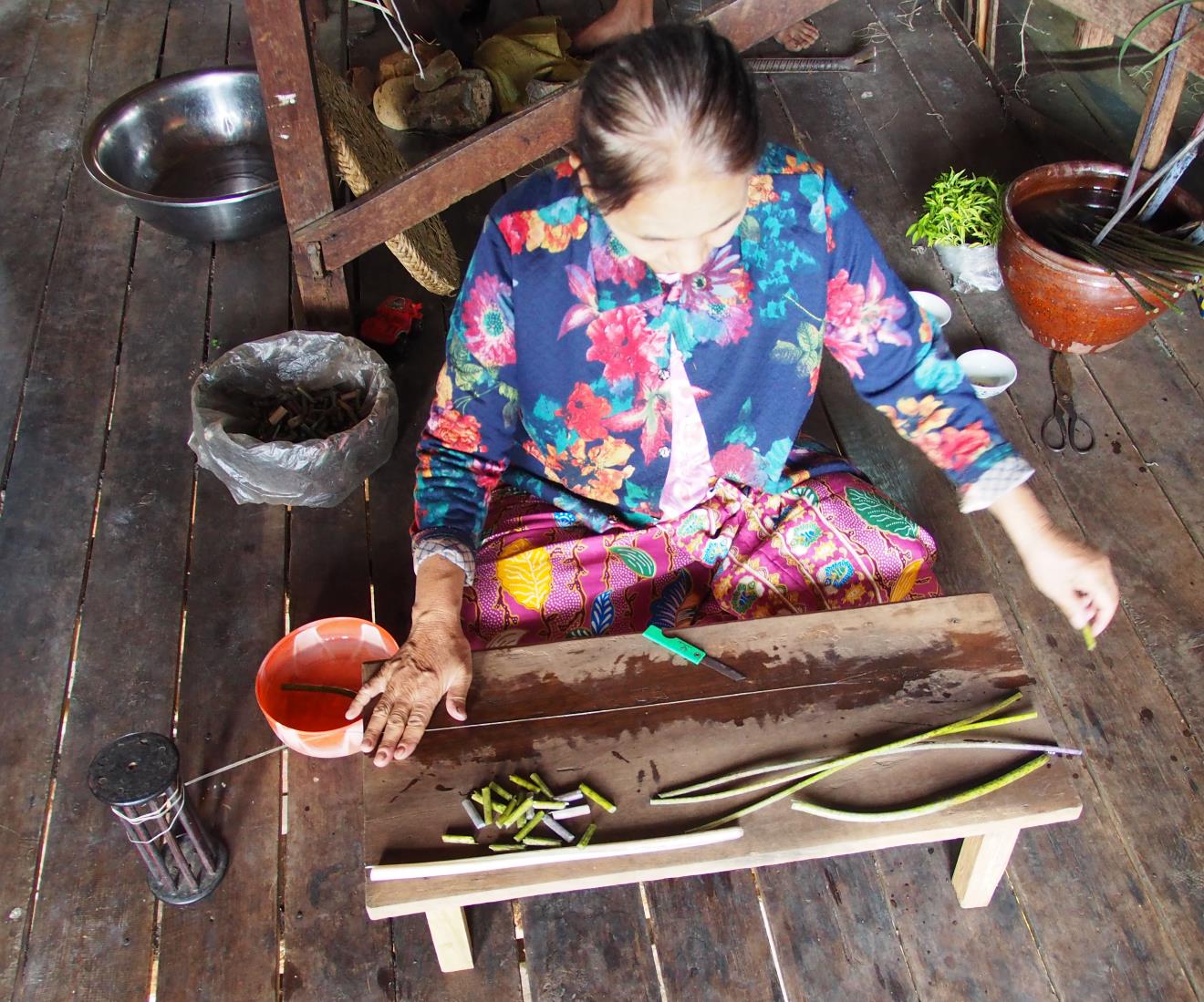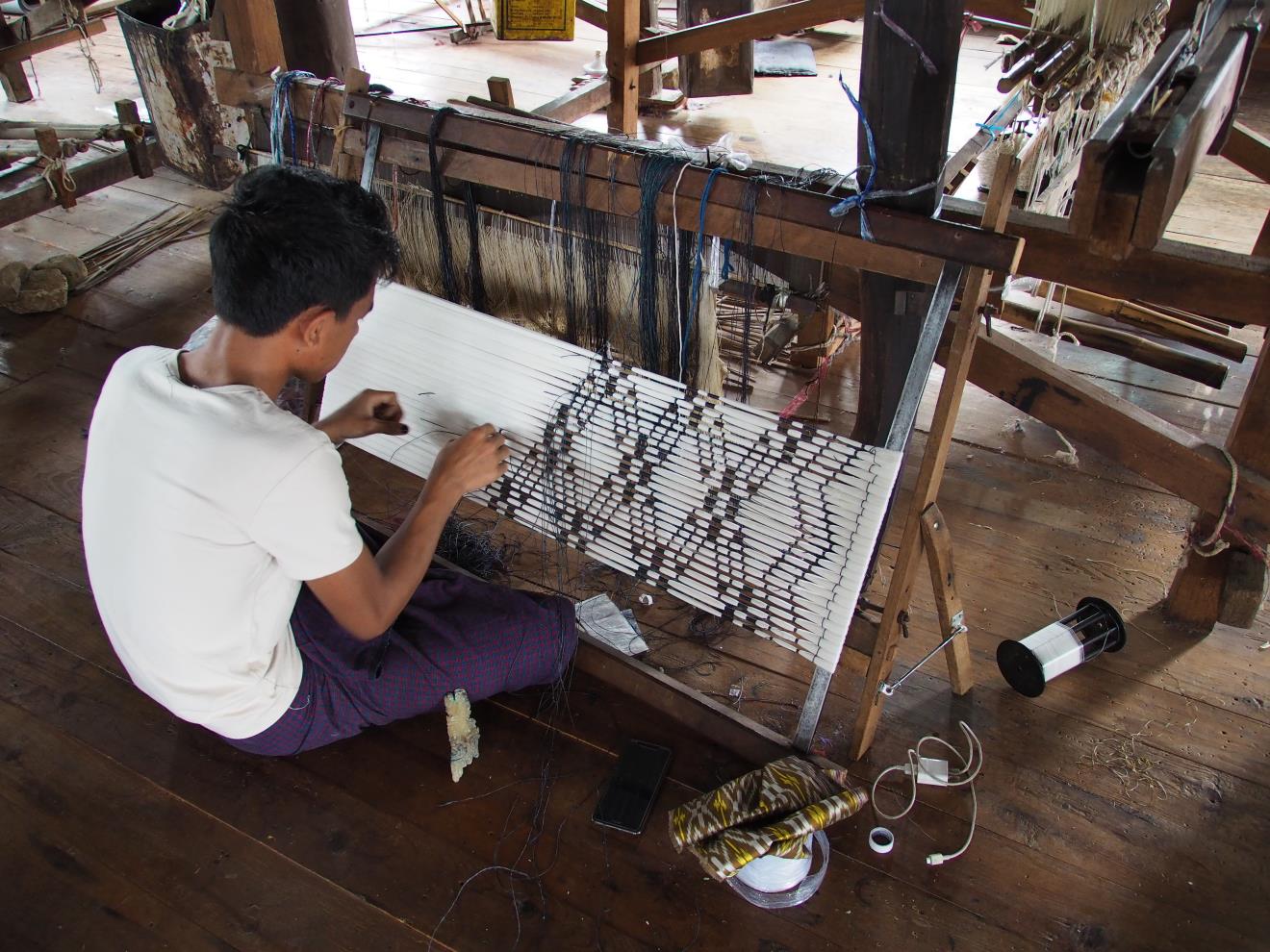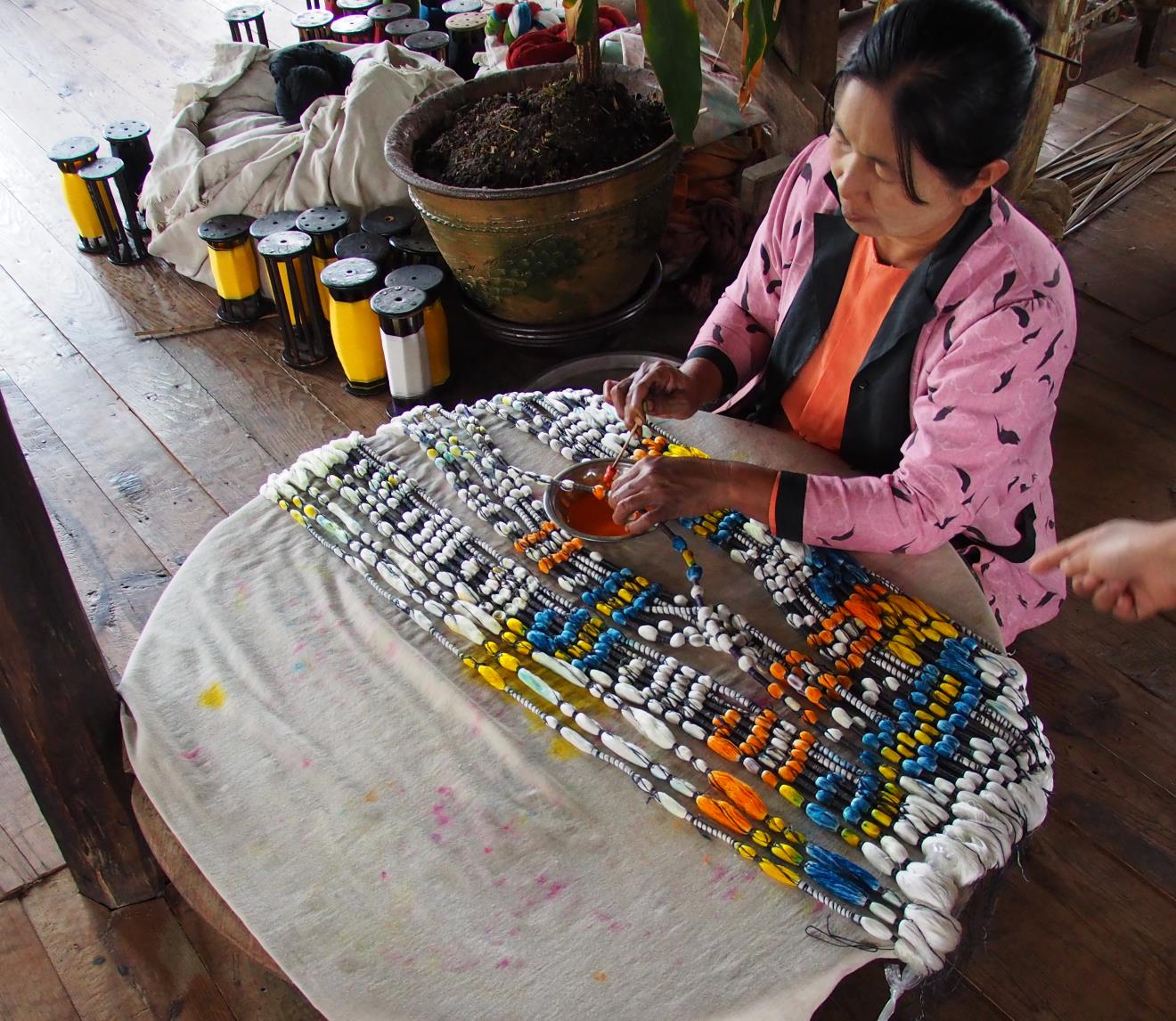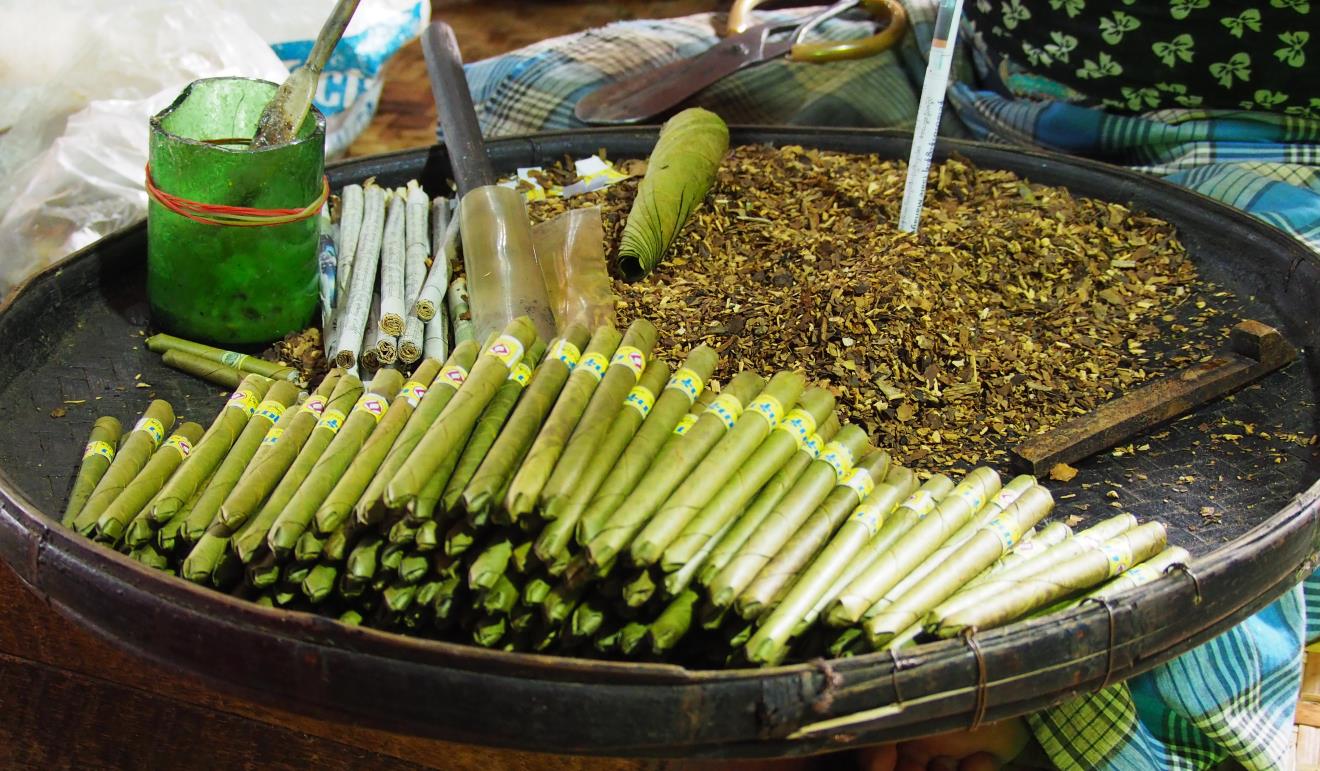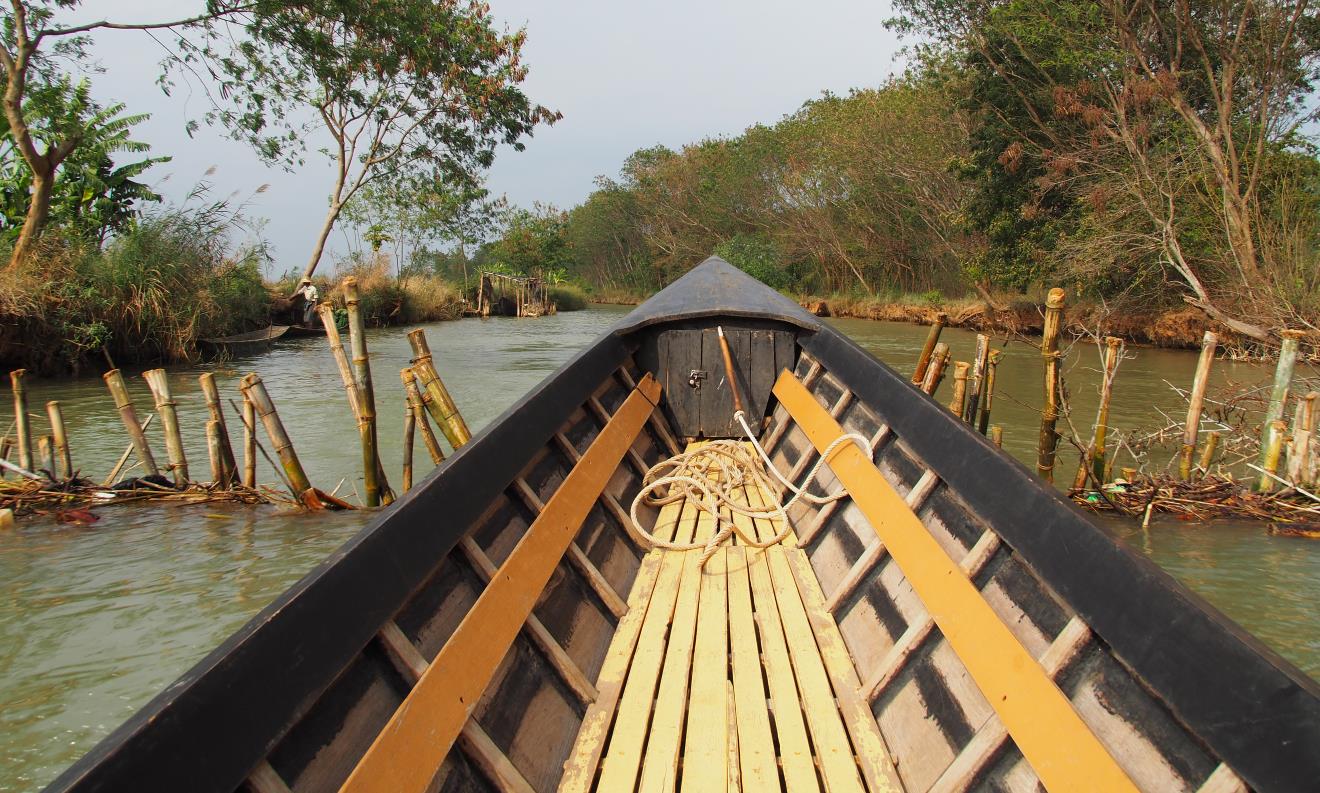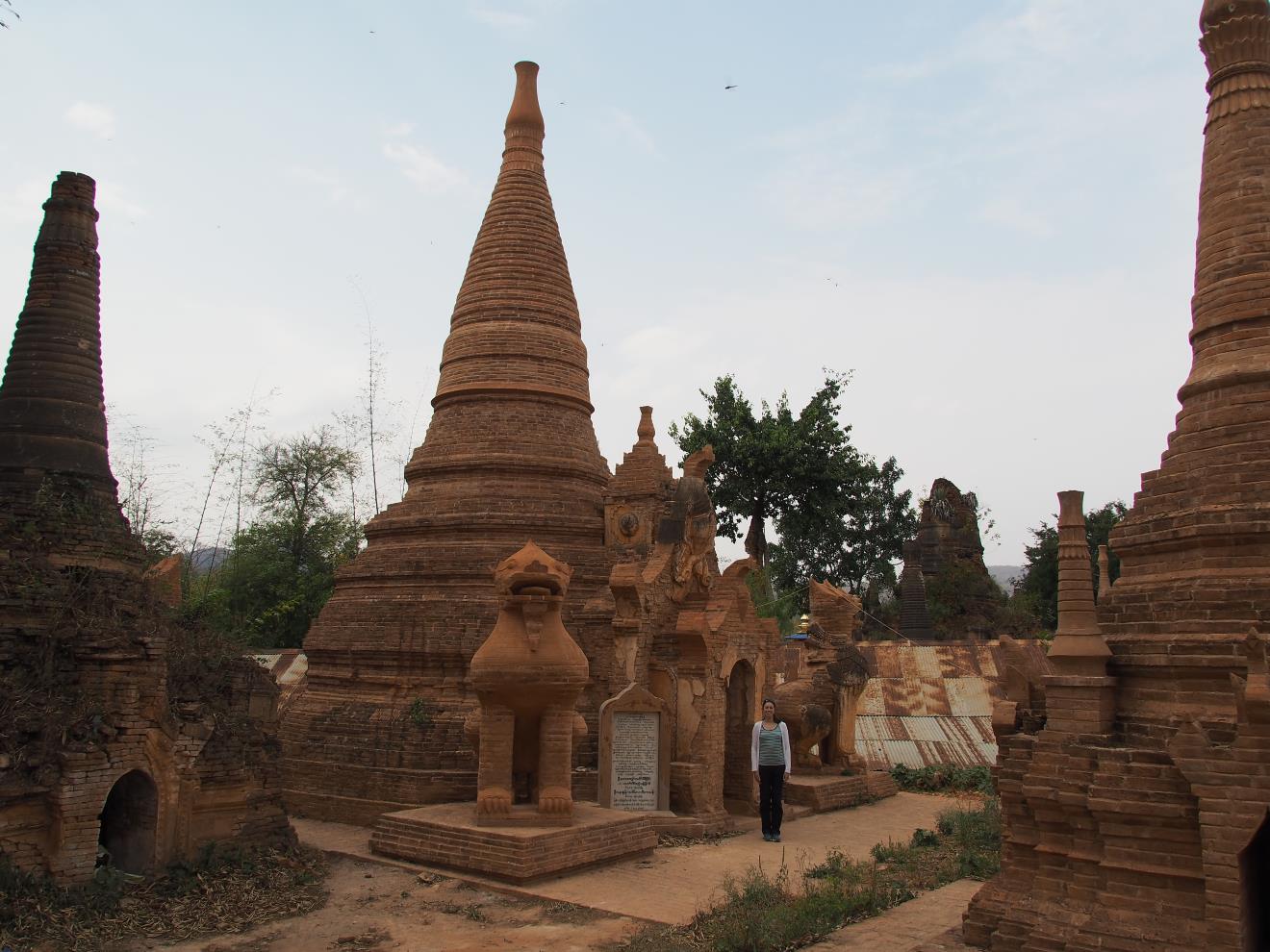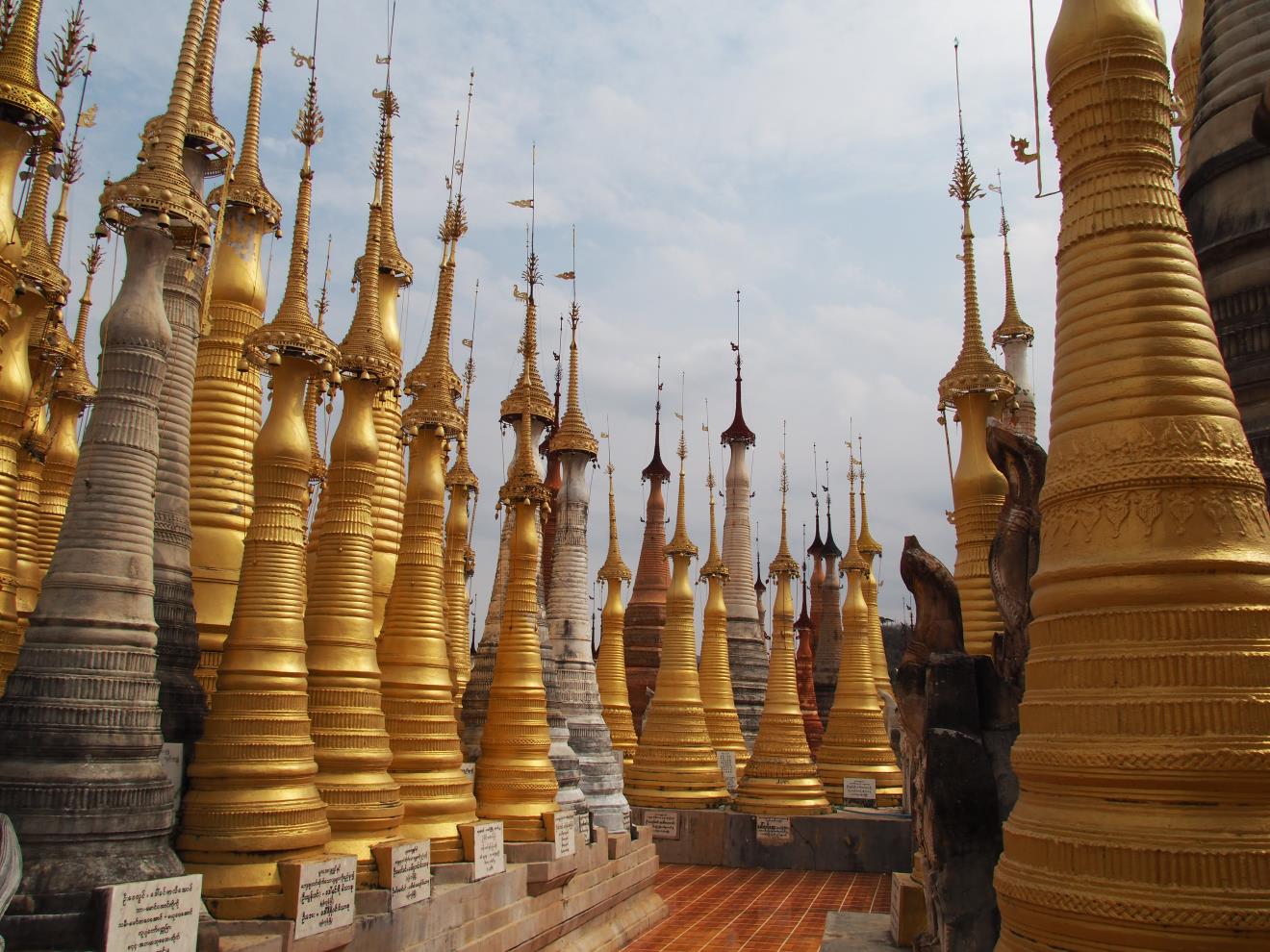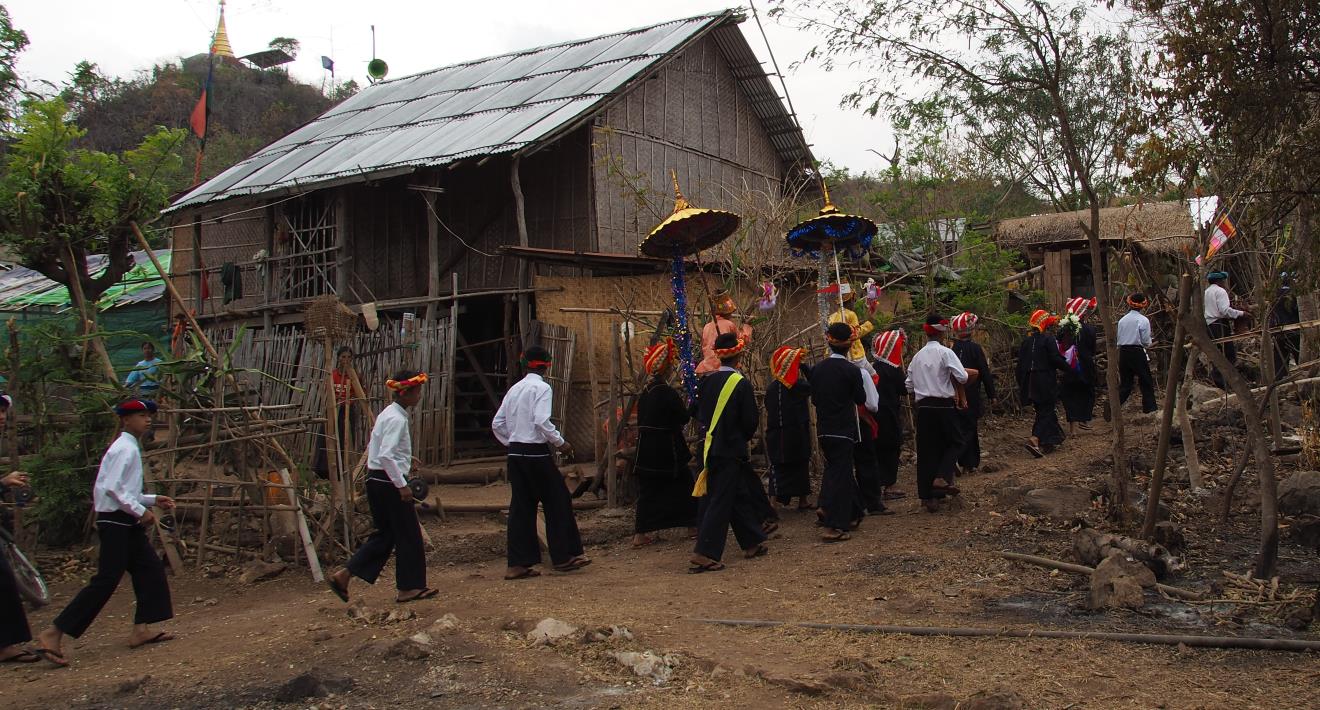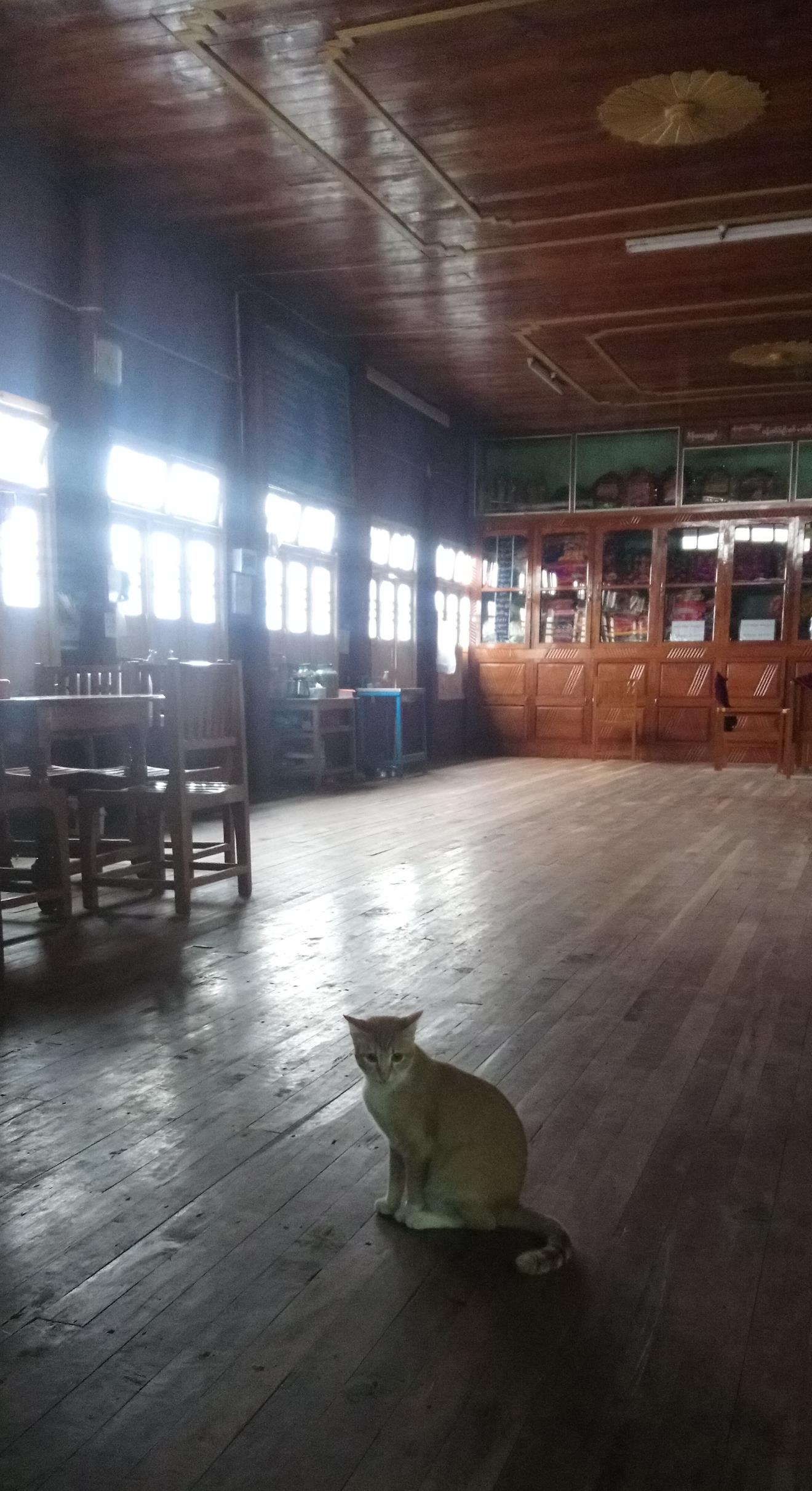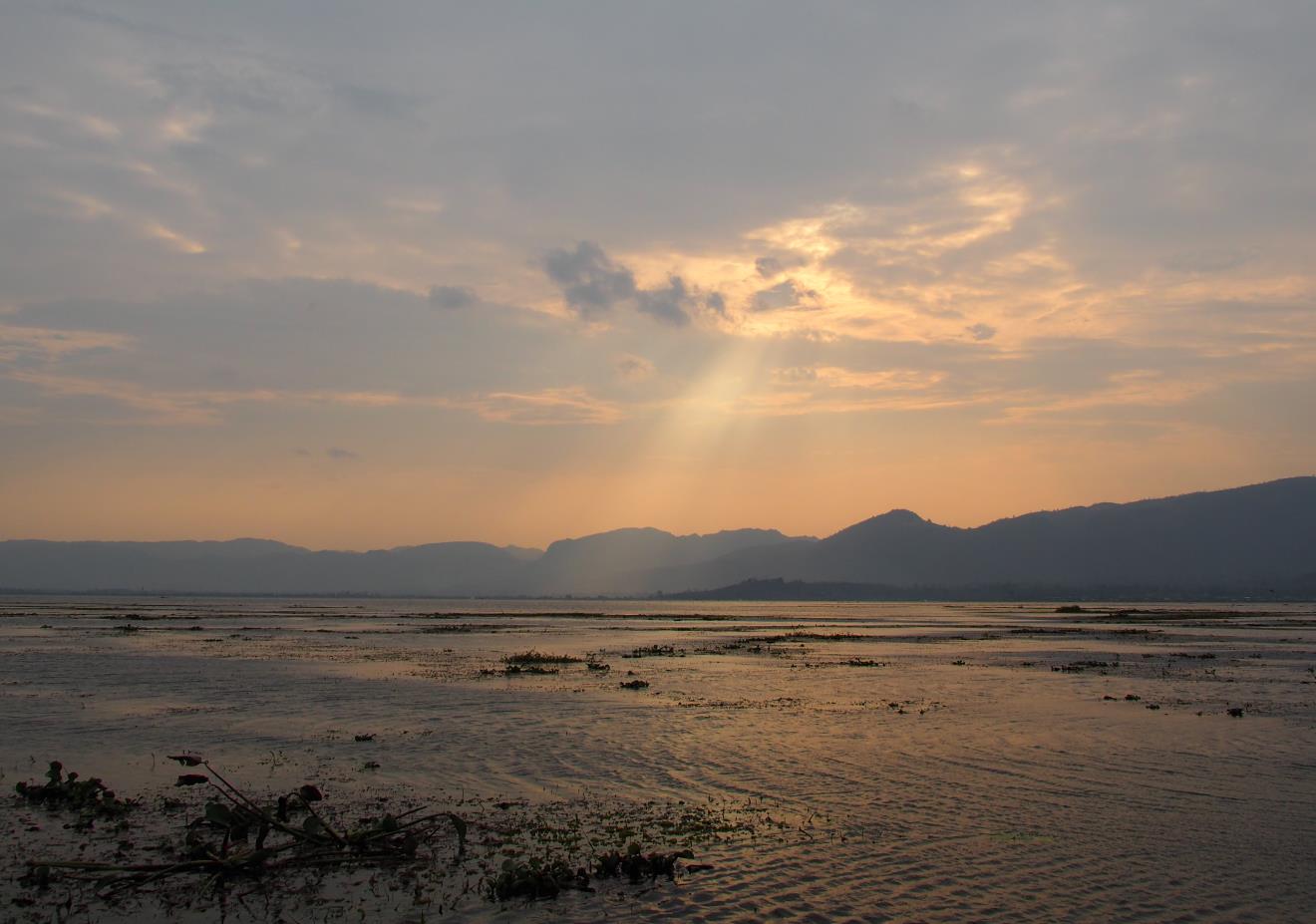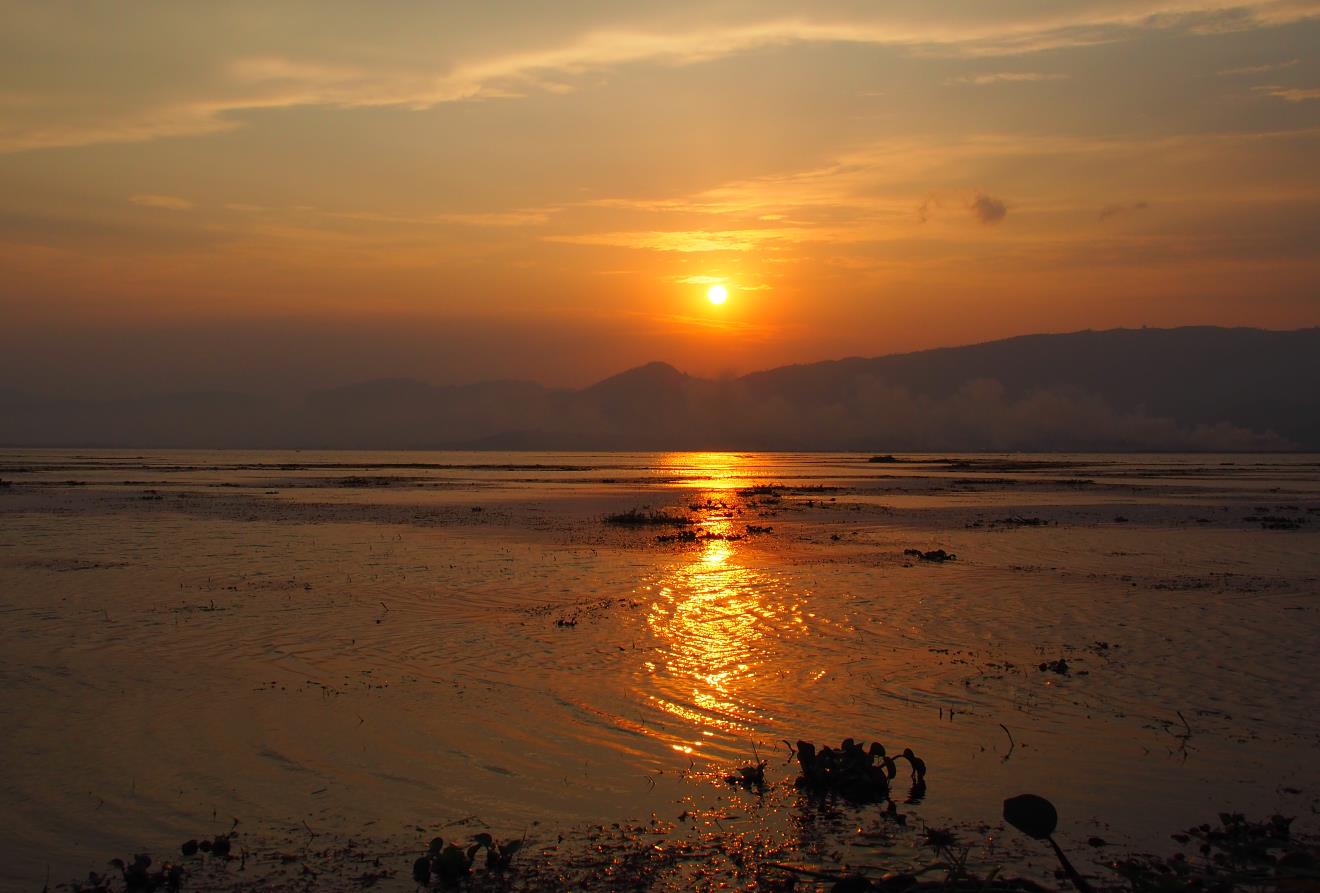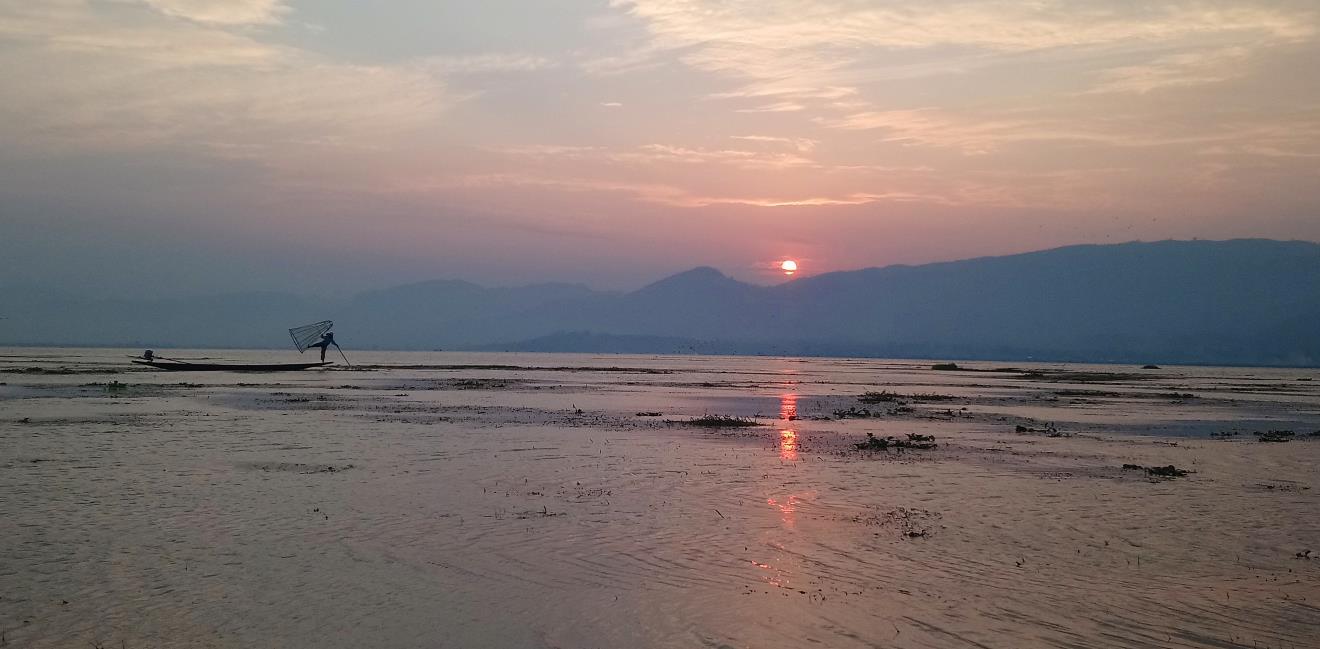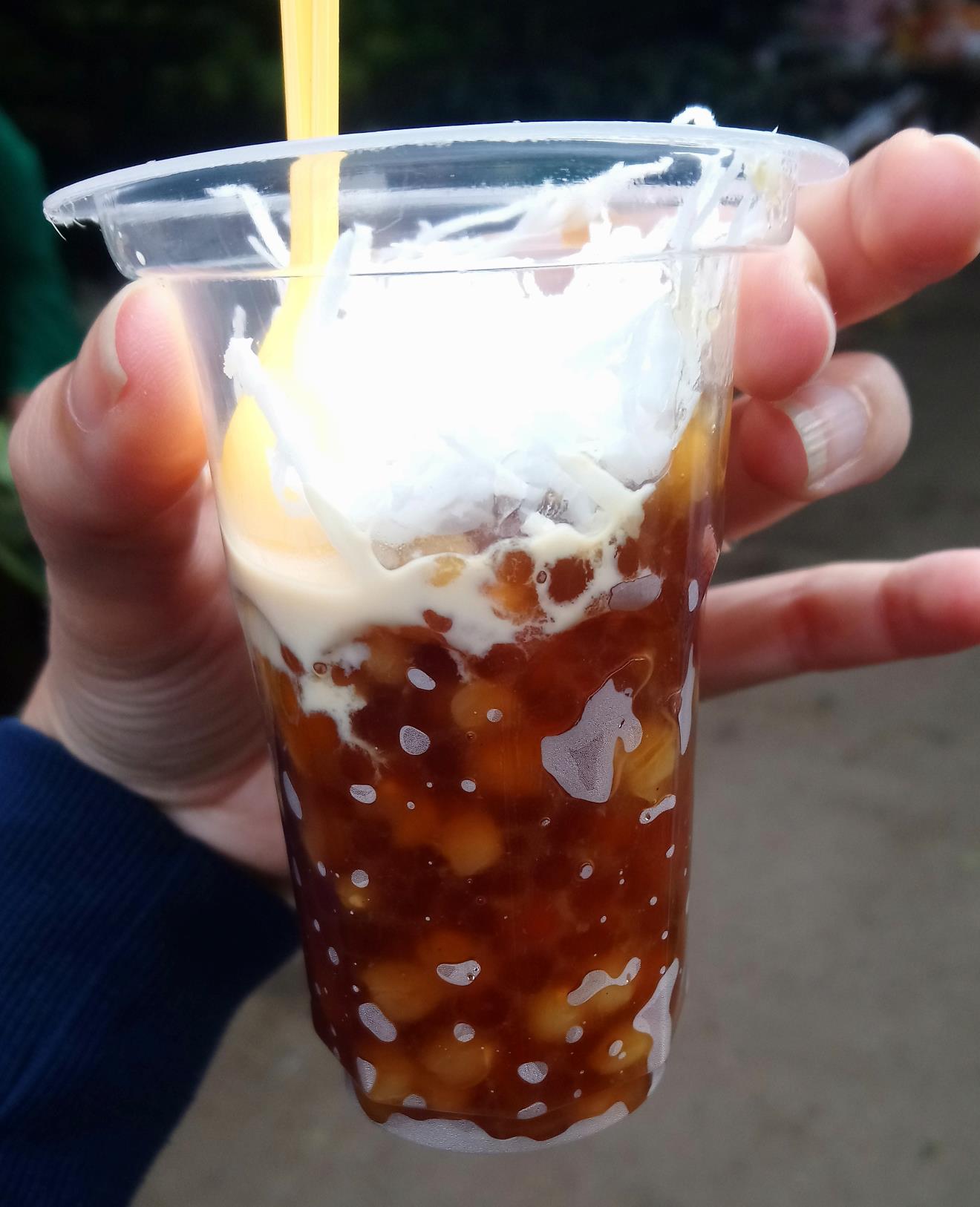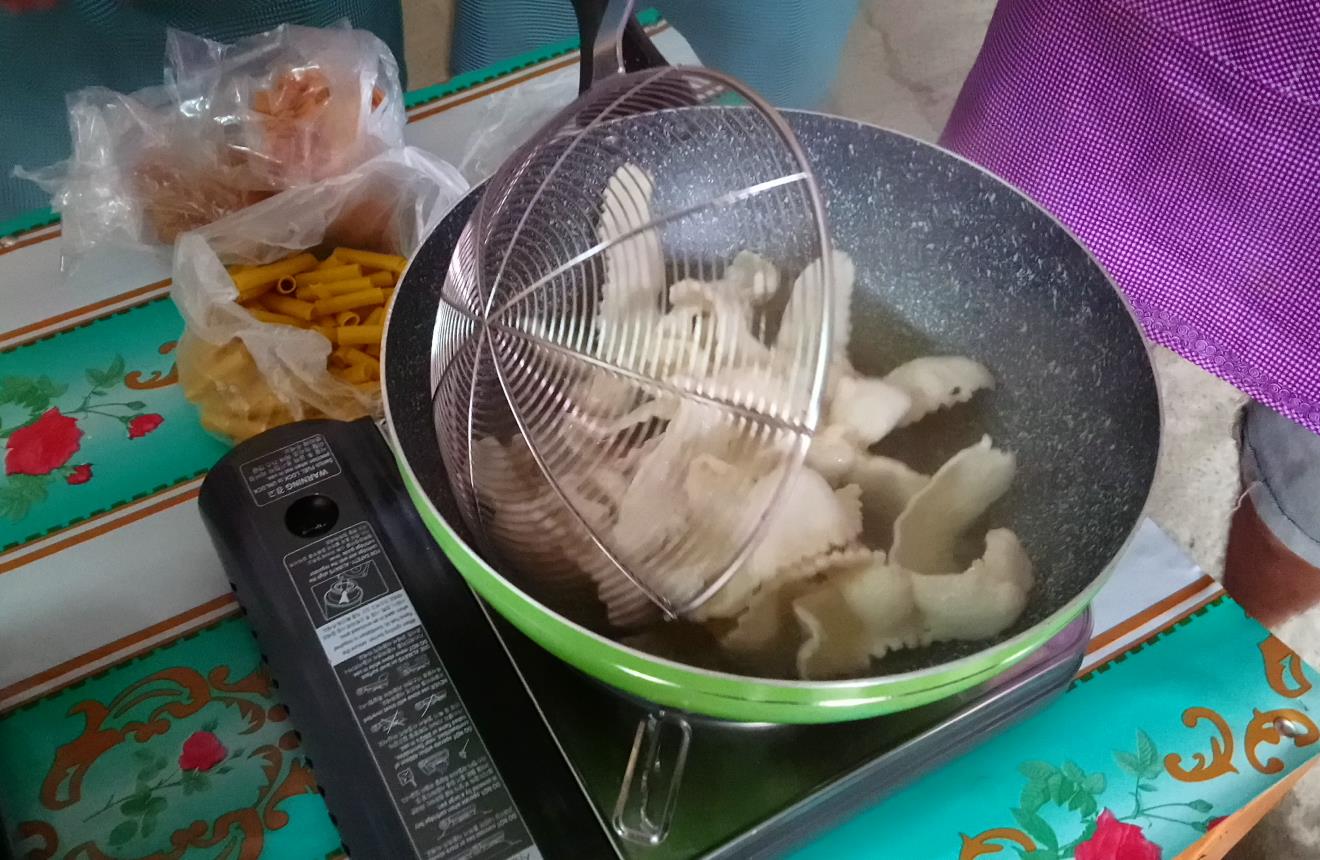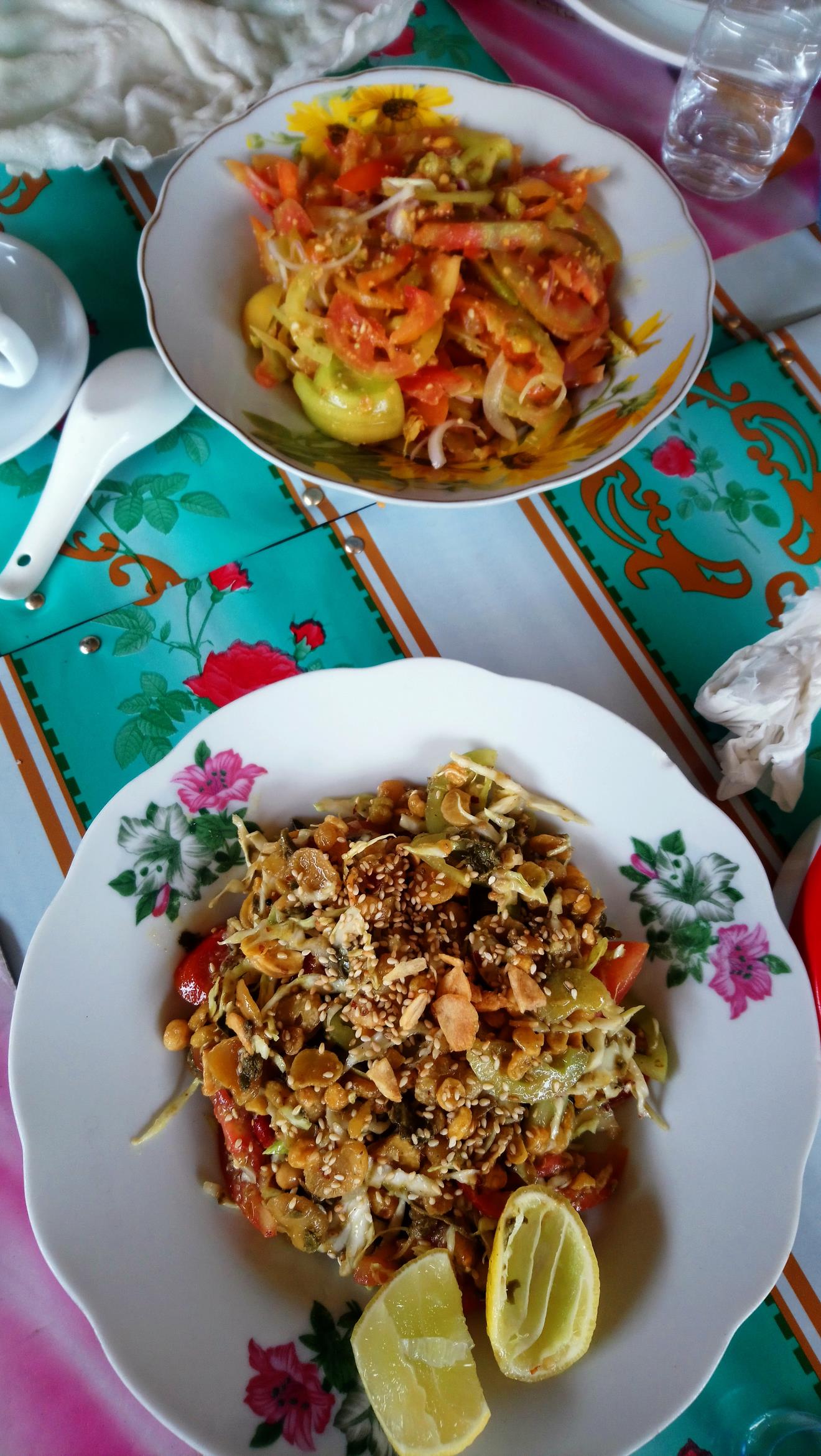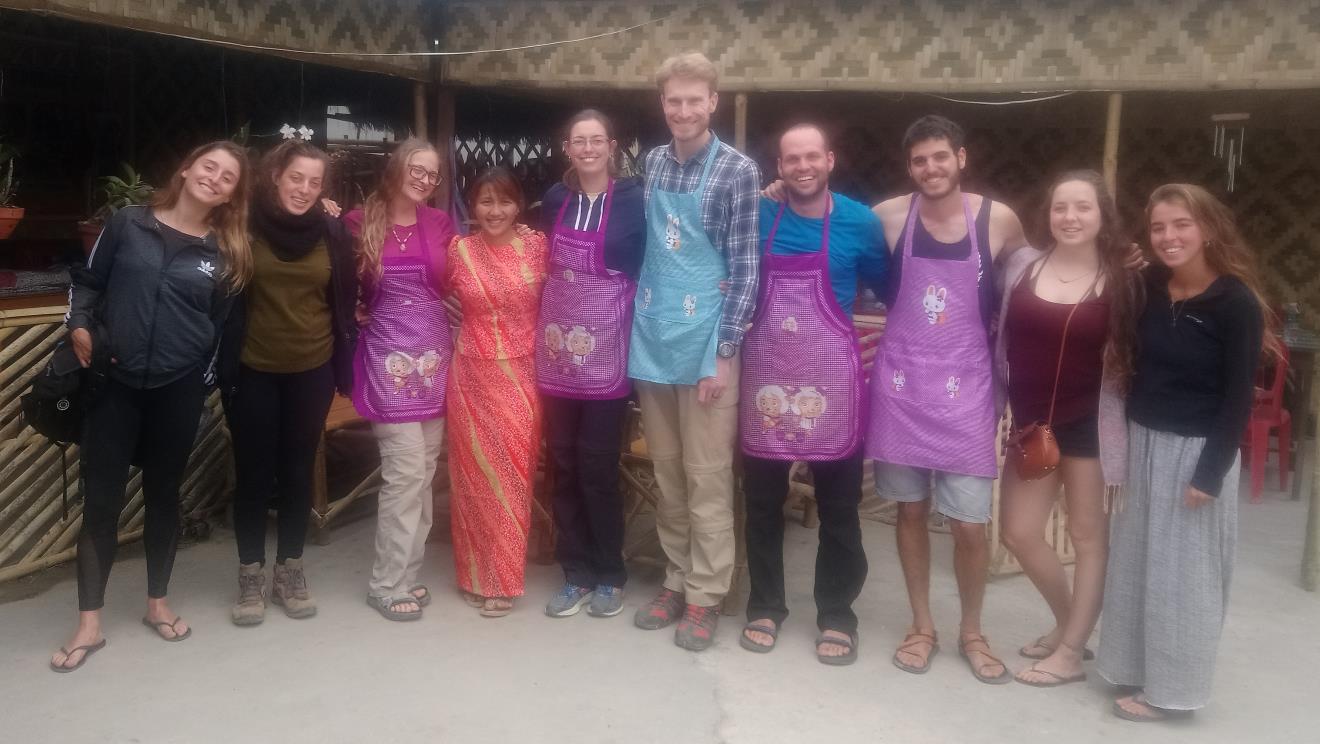Inle Lake
Tue, Mar 12, 2019
10 min read
Our bus to Inle took six hours, due in part to some rather hairy switchbacks!
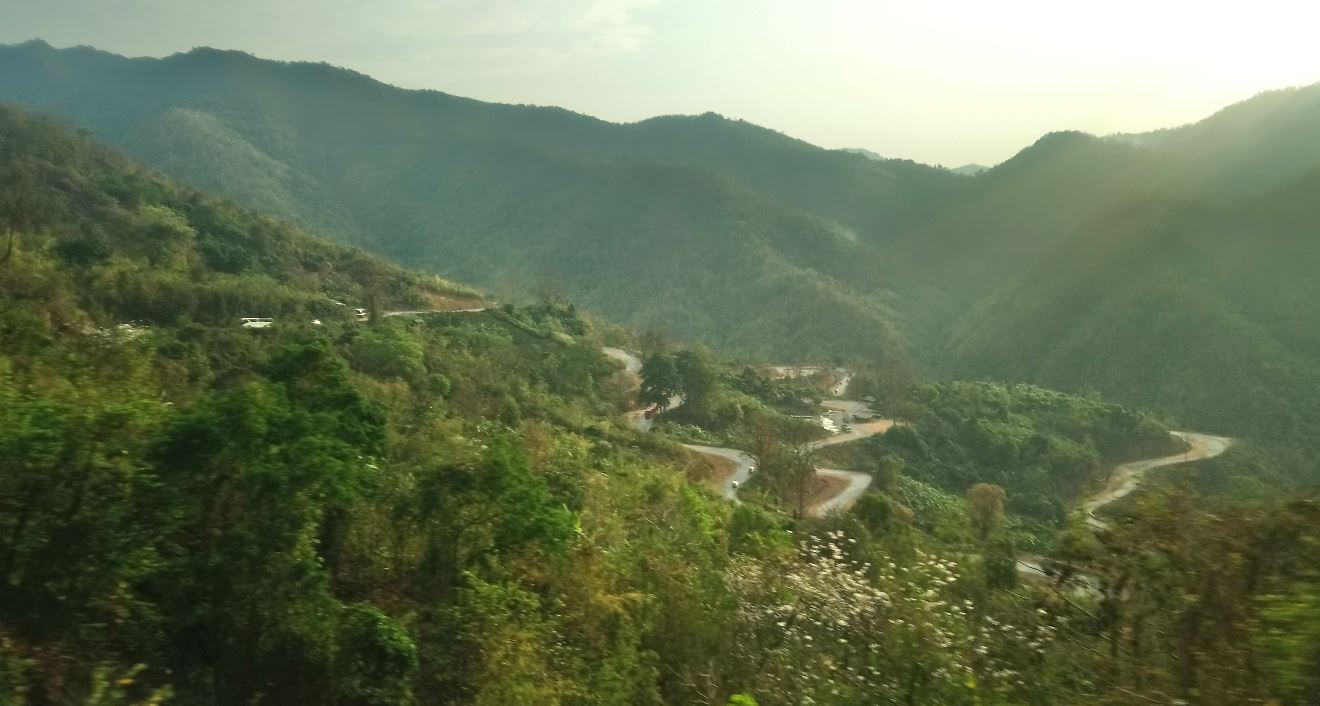
Again, we had a comfortable bus and a pleasant enough journey, with a very tasty lunch stop at a diner and some odd sights on the way up. These included James trying to understand how to play a game called Gangnam Style 2 (who even knew there was a Gangnam Style 1?!) on the bus screens, a large number of cattle in cages and elephants being transported on the back of trucks. The windy road to Inle was being upgraded and it was really interesting to see the locals (men, women and children) all mucking in to move stones by hand and help with the building process.
We were staying in a town called Nyaungshwe, which was to the south of the bus route, so we were dropped off in Shwenyaung and took a taxi to our accommodation, Inle Inn. This was a lovely looking hostel, all made out of bamboo and with a nice central courtyard. What we didn’t realise until later was just how thin the walls were and that we’d be able to hear literally everything going on next door!
Before arriving, we’d been told about a lady called Zuzu who organised boat trips and ran a cooking class so we went to her restaurant, Sunflower, for dinner and organised our itinerary for the next two days.
Exploring Inle Lake
The next morning, after a tasty breakfast of Shan noodle soup, we arrived back at Sunflower to meet our boat driver who would take us on a day trip on Inle Lake. Our boat was long and thin and we had it to ourselves. It was pretty cold, as Inle is at about 1000m elevation, it was cloudy and raining intermittently and the wind from the boat rushing along didn’t help.
We sped across the lake to our first stop, the floating garden. On the way, we witnessed fishermen gathering boatloads of river weed, which is apparently used as fertiliser. We also saw fishermen hitting the water hard with their oars, in order to bring the fish to the surface. The fishermen are incredibly talented, laying nets with their hands whilst standing on one leg and using the other leg to steer the boat with an oar.
The floating garden was amazing and something I’d never seen before. Instead of growing food on land, the locals here have planted rows of vegetables in the lake instead. It was funny to see all the farmers tending to their crops from their boats.
We continued onwards into the farmers’ village, which was still on the water. It felt a bit like Venice as all the “streets” were rivers and people were driving around in boats. It even came complete with its own roundabout! The houses were mainly made out of bamboo woven into intricate patterns, or were brightly painted.
The lake is very much a working lake and there are many industries based here. The first one we visited was a silversmiths, where they showed us how they produced pure silver from the ore mined in the hills and then moulded it into jewellery or ornaments. I ended up buying a pair of silver hoop earrings, which for £16 seemed quite reasonable!
Our next stop was at a weaving centre, where we also saw some women from the Kayan tribe, otherwise known as the Long Neck women. From the age of nine, the women start to wind metal around their necks, apparently to protect them from tigers. Over time the coil is lengthened and becomes heavier, forcing the lady’s collarbone down, hence creating what appears to be a long neck. Although the tribe isn’t actually from this region, they travel here for tourism.
Our tour also included stops at various pagodas. The first one was called the Five Buddha pagoda. The story goes that when the figures were moved from this spot, bad weather set in and it was only when they were returned that the bad weather stopped. Since then, they have remained in this temple. The figures were interesting, as they were just irregular blob shapes, and not at all in the image of Buddha.
From there, we looked around the fishermans’ village (again stilt houses made of bamboo) before heading to a lotus, silk and cotton weaving factory. This was really interesting, as we were shown how they extract fibres from the lotus root and turn it into thread for weaving. In contrast to other weaving we’ve seen, where they dye the thread one colour and then weave in the pattern using different thread, here they paint the pattern onto one piece of thread and then simply weave using that.
We stopped for lunch at a restaurant on the lake, where I had some fresh river fish. We then visited our final factory, which made wooden boats and cigars. Myanmar seems to be pretty into its wood carving and there were lots of intricate tools and ornaments on display. The factory makes three types of cigar, strong, sweet and banana flavoured. We declined trying them!
From here we deviated from the lake to visit the In Dein pagoda complex. This was upriver and so had cost a bit extra to include in the tour (about £1.50 each!) but was well worth the visit, if not simply for the journey there. As we entered the river, there were some bamboo sticks lying across it, which effectively acted as speed bumps as the boatmen had to lift their motors out of the water to go over them. There were also a series of locks up the river, which had a narrow gap just wide enough for our boat to fit through. I was very impressed with the skill of our boatman who managed to get our boat precisely through each of these gaps each time, while also travelling at speed to make sure we made it up over the lip. Not everyone was so lucky - we did see one guy misjudge it and get stuck at one of them!
The In Dein pagoda complex is made up of hundreds of temples. Many of them are ruins and reminded us a bit of Angkor Wat or My Son, but with much fewer tourists! As we wandered up the covered walkway towards the main area though, things became better preserved. Within the main pagoda complex, many of the shrines had inscriptions at the base and we thought initially they were like headstones, but it turns out they are dedicated to people who had paid to have that particular pagoda restored. Some were dedicated to people from overseas, including Germany, Australia and South Korea.
The oddest thing about this place was the incredibly loud music blaring out from a nearby village, completely shattering the tranquility of the pagoda complex. We were told that this was to celebrate the children of the village coming of age and starting their journeys as monks. Many of the houses had loudspeakers on the outside and each was blasting out a different song. It was actually pretty painful on the ears! We didn’t hang around too long, but I don’t know how the villagers coped with that racket all day!
Back on the boat, we headed back to the lake for one final pagoda stop, the aptly named Ancient Wooden Pagoda with Cats. I can confirm it was indeed wooden and there were cats! It also had some interesting murals depicting Buddha’s life, helpfully with English explanations.
From here we motored on back to the north of the lake, where we pulled up just before the end to watch the sunset. We had about an hour and a half to wait and were entertained by various birds trying to fly against the wind, as well as fishermen being rather acrobatic with their conical nets. The sunset was pretty, however by this time we were pretty cold so were glad to head back to our hostel for a warm shower. On the way back, we passed a number of water buffalo swimming alongside us.
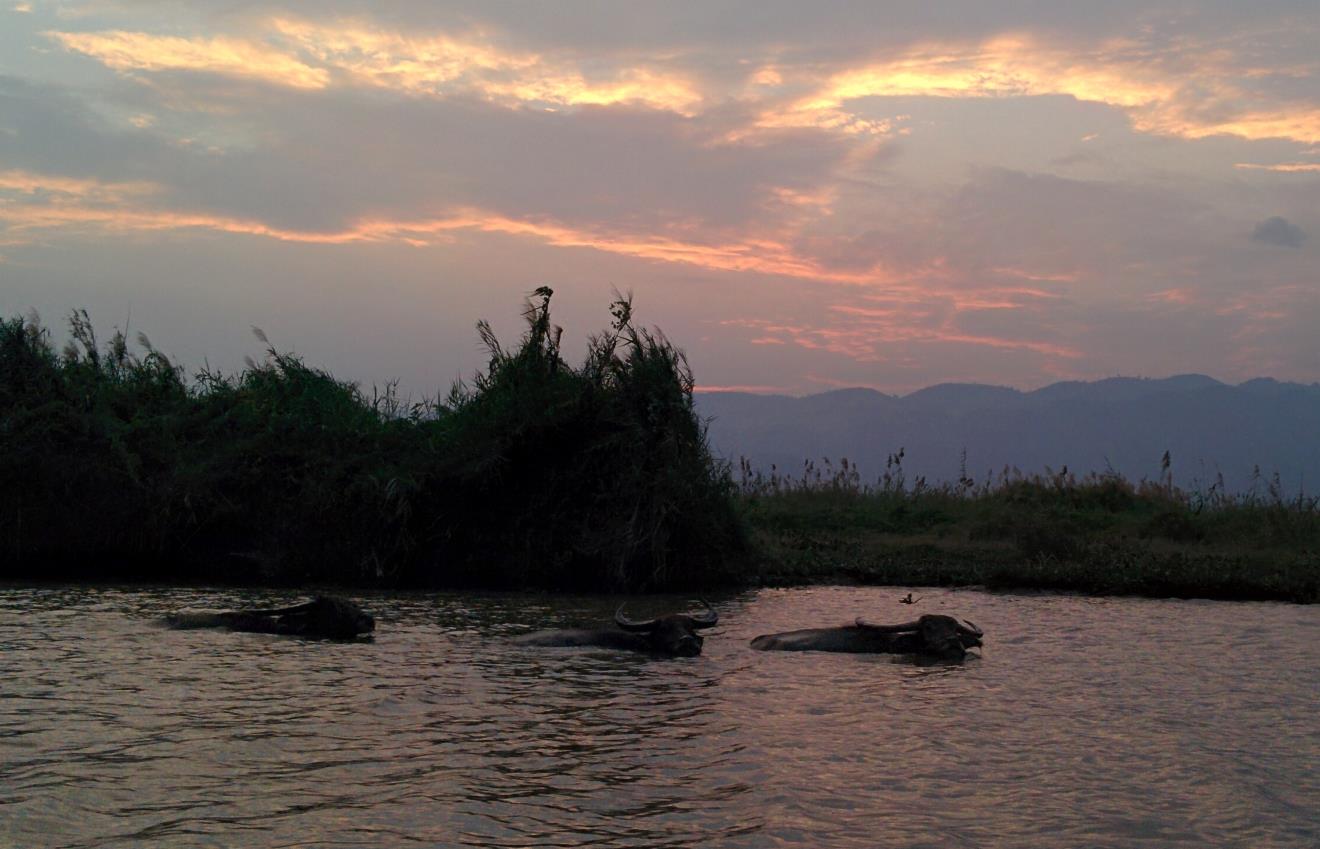
This was a fantastic boat trip, costing about £12 for the two of us for 10 hours on the boat. We saw loads of interesting things and I would highly recommend it, although next time I’ll pack my down jacket!
Having warmed up, we headed out for dinner at a local pub. We both ordered tartiflette, which was OK, but unsurprisingly not as good as in the Alps! After dinner we attempted a game of darts and a game of snooker, neither of which were particularly successful due to the bad kit.
Cooking up a storm
The next morning we returned to Zuzu’s for her cooking class. We were joined by eight other people, all from Israel and travelling after finishing their compulsory military service, who turned out to be really interesting and good fun. We started at the market, where Zuzu showed us lots of different foods and taught us about Shan and Buddhist culture.
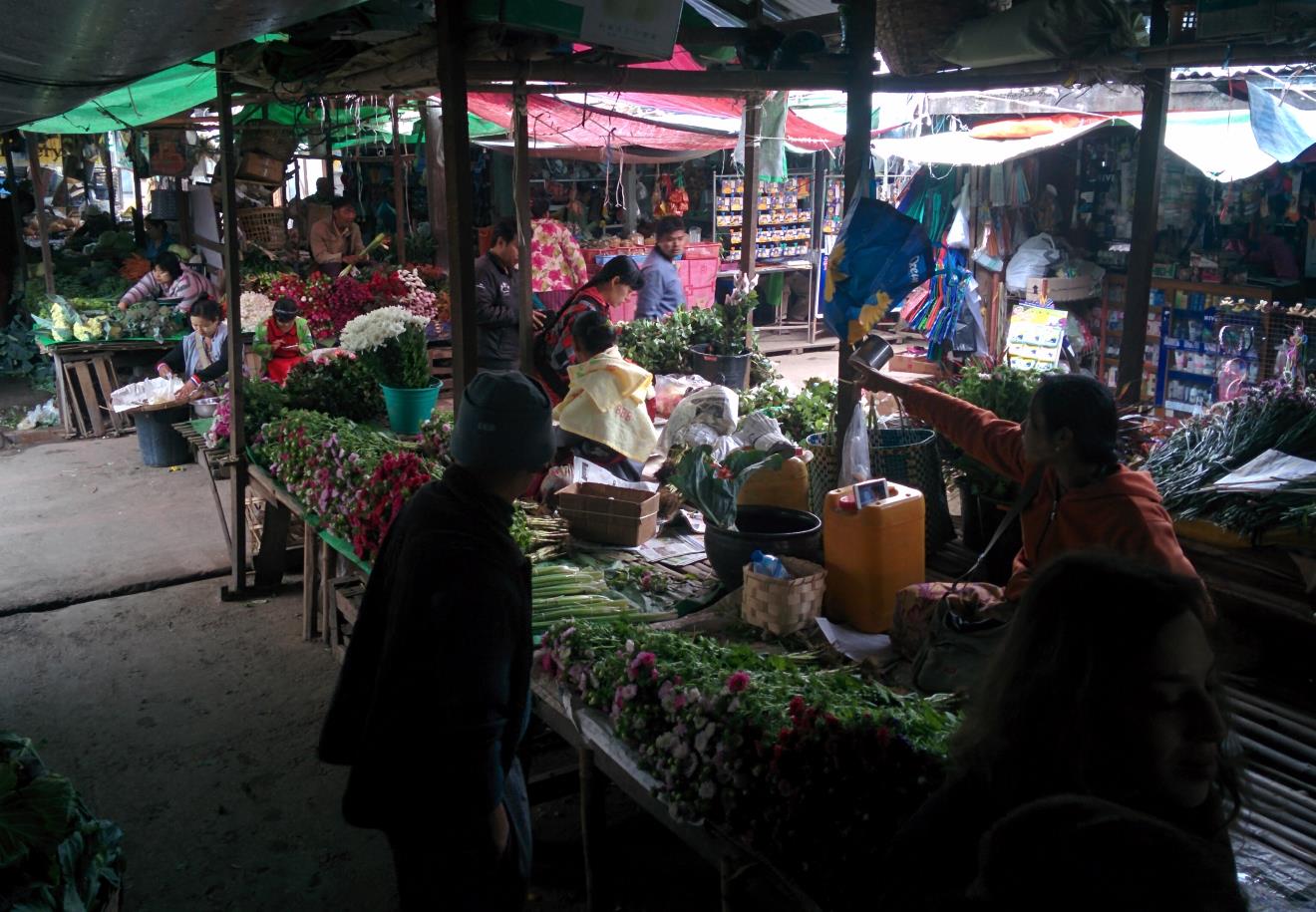
It’s quite typical in Myanmar to see people chewing betel leaves with something red inside, which stains their teeth and leaves red marks on the floor where people are constantly spitting out the juice. Some of the group were brave enough to try one, but the look on their faces told me we’d made the right choice not to!
We did, however, get to try loads of really tasty things, the highlights being hot tapioca with coconut and condensed milk which tasted just like treacle sponge and custard, deep fried samosas and some sort of savoury crisp mix. By the time we left, we were extremely full, and we hadn’t even started cooking yet!
A short tuk tuk ride later, we were at the kitchen. We each got to choose which curry we’d like to make, with James opting for peanut and me for eggplant. We started with a tofu salad that we’d bought in the market, where the tofu was made from chickpeas instead of soya. Together we then prepared some of the ingredients for our dishes, which involved lots of chopping, grinding and pounding. The first dish we started making was the lentil soup, followed by some deep fried savoury snacks with some delicious dipping sauces (tamarind, lime and tomato), which expanded rapidly when placed in hot oil. Unfortunately one of the girls didn’t stand back far enough and got splattered in the face, which resulted in her choosing to go home early.
We then each made our curries. In Myanmar, each curry is made from the same base and then just one or two additions depending on the type of curry you’re making. While our curries were cooking, we enjoyed a selection of delicious salads, including tea leaf, tomato and ginger. Finally our curries were ready and we shared them out around the table, whilst sharing some funny travelling stories. The meal was finished off with some deep fried bananas and honey.
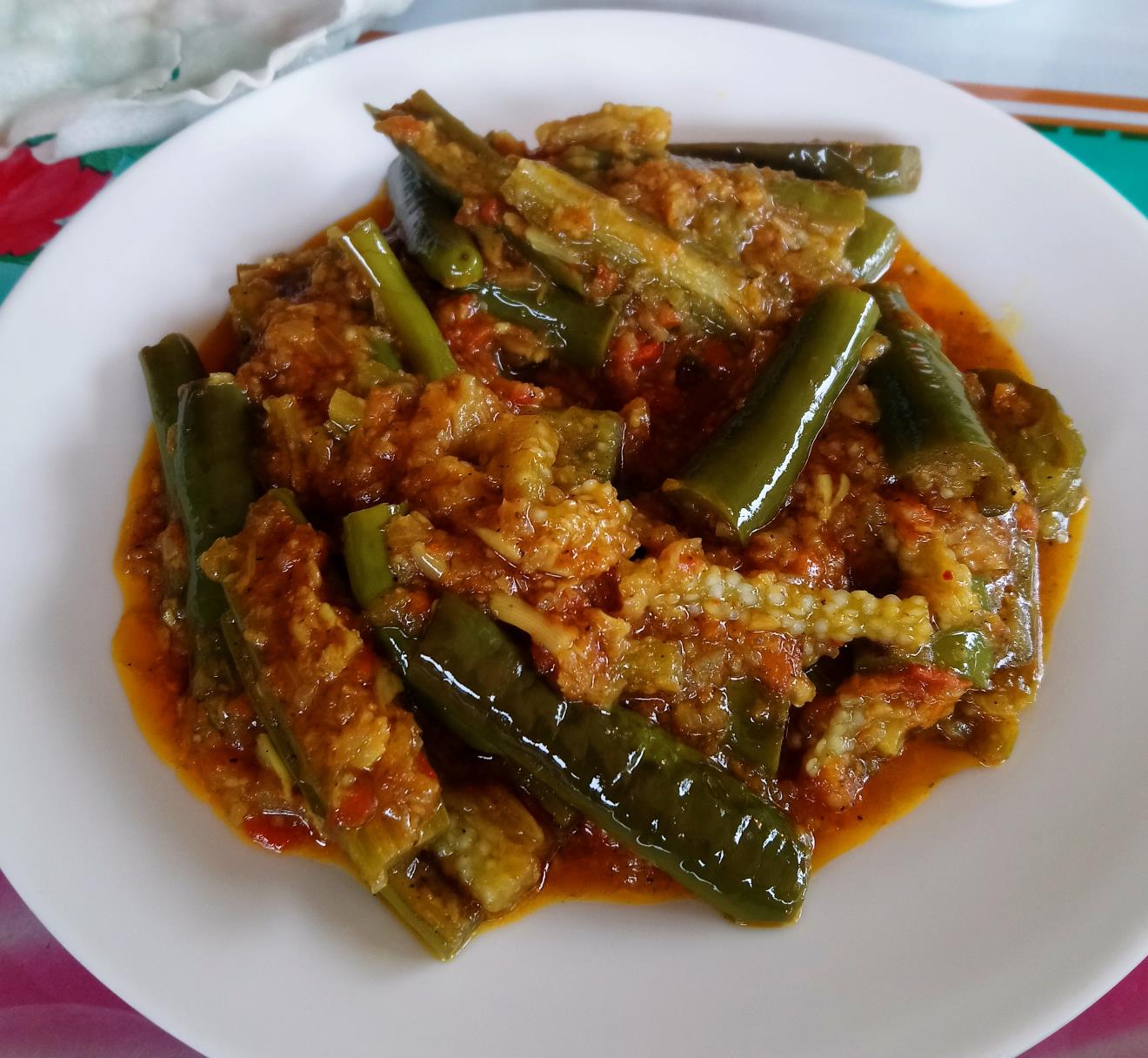
If we learnt nothing else from this class, it’s that Burmese people fry everything! We thoroughly enjoyed the class and left feeling incredibly stuffed and in need of a lie down!
That afternoon, we ventured out for a quick wander around town, stopping by a night bazaar, where there were loads of kids at football training doing lots of different drills. We then went back to the pub, where we played some more successful games of pool. That evening we decided to go for a small dinner of pizza as we were really still quite full from the cooking class.
The next morning we took a bus to Bagan. This bus was much less comfortable and the journey was just horrendous, with many of the locals being sick as it drove back down the windy road. Instead of taking six hours, the bus took eight and we arrived in Bagan rather worse for wear!
Overall we saw a lot of things during our couple of days in Inle and it was good visiting the Shan region as they have a lot of traditions that are unique to that area. However, due to Inle’s position in the mountains, it does take a long time to get there and if you were on a shorter trip, it might take too long.
